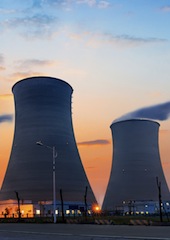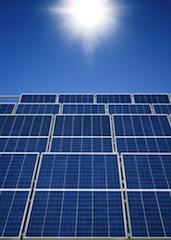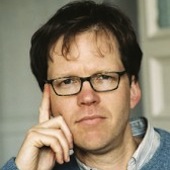To Deal With Russia, Germany Needs Renewables
Will the Ukraine crisis force Germany to backtrack on the Energiewende?
March 23, 2014

The Ukraine crisis has starkly underscored how dependent Germany, and indeed much of Europe, is on Russian hydrocarbon imports. And the recent course of events shows how quickly and dramatically shifting political sands could upend business-as-usual.
Even if the Crimea crisis disappeared tomorrow, the questions it raises about security of energy supplies in the age of the Energiewende now loom even larger. The fact that Germany’s monumental clean-energy switch now enters a new phase with its renewable power supply approaching the 30% mark makes it all the more pressing.
Poland’s Prime Minister Donald Tusk went as far as claiming that Germany’s energy transformation explains Berlin’s limited diplomatic leverage over against Russia. Poland’s conclusions for its own supply security are to opt for more coal production, a first-ever nuclear program and shale gas exploration – the polar opposite of neighboring Germany’s energy strategy.
How dependent is Germany on Russia?
Russian gas and oil are indeed very important to Germany, in particular gas for heating. Only a small volume of the gas supply is used for electricity generation. Nearly 40% of Germany’s gas comes from Russia (Norway supplies 35% and the Netherlands another 22%).
As for Russia, 70% of Russia’s exports to Germany, its third-largest trading partner, are in the form of hydrocarbons. This mutually beneficial relationship is why most energy experts doubt that even “a new Cold War” will fundamentally alter the status quo.
In addition, most of the gas and oil contracts are so-called “Long Term Contracts” with durations of 15 to 25 years. Moreover, with an increasingly diversified gas market, alternatives to Russian gas are ever more plentiful.
Yet, whether push comes to shove or not between the EU and Russia, nobody can deny that there is a heightened risk factor. Worst-case scenarios have to pose the issue of interrupted supply.
The Crimea crisis in strategic context
All of this leads to a big question, which in all likelihood is also the intended target of Donald Tusk’s remarks: Might the ongoing crisis cause Germany to rethink its nuclear-power phase-out? After all, Germany is currently scrambling to ensure reserve power capacity for the day when the next batch of nuclear reactors go offline.
Nuclear power currently provides a sizable chunk of Germany’s “must-run capacity,” which will have to be replaced. State-of-the-art gas-fired works are meant to provide most of this flexible reserve capacity. But what if the gas isn’t there?
The response from Berlin is unequivocal. The nuclear phase-out is etched in stone, as German officials underscored again on the third anniversary of the Fukushima disaster in Japan on March 11, 2014. There is no discussion at the moment in Germany about reversing or even extending the duration of the phase-out.
What is under discussion is a range of options for addressing the capacity dilemma. As the Berlin-based think tank Agora Energiewende points out, all of them relieve the burden on natural gas in terms of reserve capacity. The Merkel government is currently deliberating on the measures to pursue.
Central Europe makes its play
Furthermore, when it comes to nuclear power, there is a pivotal point that Mr. Tusk and the other Central European advocates of nuclear energy gloss over: 30% of the uranium used as fuel in EU Europe’s nuclear power plants is imported from Russia — the bloc’s largest single source. If nuclear power is meant to decrease dependence on Russia, this supply would have to be replaced.
Naturally, the first place to look to bolster the security of gas supply is not nuclear power, but gas-supply alternatives to Gazprom. One option is unconventional gas like shale gas — whether in the form of imports from the United States or domestic production in Germany or elsewhere in Europe.
The possibility of U.S. exports appeals to both the Central Europeans (who buy 70 – 100% of their gas from Russia) and much of the U.S. political establishment. It sees the crisis as a lucrative business opportunity that, as an added benefit, can have a real geostrategic impact.
Geopolitical desires and tradeoffs inside the U.S.
Yet, this is not a realistic option either. The United States is at least two years away from having the infrastructure in place to export any LNG (liquified natural gas) at all across the Atlantic. In addition, the volumes contemplated are not anywhere near enough to make a real dent in Russian exports to Europe.
Nor is there a consensus, even among energy experts inside the Untied States itself, that shale gas reserves in U.S. are plentiful enough to export abroad over the longer term. And there is a strategic debate to be had whether these exports, while desirable geopolitically, would not hollow out the much-touted price advantage for U.S. manufacturing.
At present, European LNG import terminals are running well below capacity so Europe could import large amounts of LNG. However, Europe would have to compete with Asia in a tight market. Indeed, if that were to happen, everyone could end up paying exorbitant prices.
As for domestic production in Europe, there is neither consensus on the extent of shale gas reserves nor on the ecological fallout of hydraulic fracking. The UK may well be the first European country to develop significant shale gas, as its government is very keen to. Otherwise, the Central Europeans are pretty much alone in their enthusiasm for shale gas, at least at the moment.
Russian gas vs. dirty energy
And then, according to the Polish Prime Minister, there is coal. Germany and Poland are the two biggest consumers of coal in the EU, respectively. In Poland, coal generates 92% of its electricity and 89% of its heat. Germany generates 45% of its power with coal, a figure that has crept upwards in the last two years, a distinct blemish on the Energiewende.
Poland clearly sees its own coal reserves, the actual volume of which is hotly disputed, as a means to energy independence. Standing in its way, as well as that of the German coal industry, are the EU climate targets, which are currently under negotiation for 2030.
Yet, both Poland and Germany, among other EU countries, import significant amounts of coal from Russia. (In 2010, the origin of 27% of the EU’s imported hard coal was Russia.) Russia accounts for just under 30% of Germany’s coal imports, second only to Colombia.
The Polish coal industry, meanwhile, is in deep crisis. The high costs of its coal production force the country to import more than it exports. Its primary source for black coal today: Russia. Once the EU Emissions Trading Scheme is finally working, Polish coal will become even more costly compared to that of Russia.
Germany will stay its course
Despite all the “encouragements” to jump ship, the odds are that Germany will stay on the course of its profound energy transformation. Strategically speaking, “more Energiewende” may be just what the doctor ordered to wean Germany off Russian gas.
Compared to the greening of its power generation sector, Germany has lagged far behind in transforming its heating sector. In order to meet its own targets for greenhouse gas reduction, argues Agora Energiewende, energy consumption for heating must decrease and renewables must replace oil and gas in heat generation almost entirely.
While Agora claims that the potential of bioenergy is relatively limited, it argues that “in the long run, both the heat sector and the transportation sector must increase their utilization of electricity from wind and PV.” Combined heat and power plants (CHP) already link the electricity and heat sectors, producing both heat and power.
In addition to bio-methane, geothermal and solar thermal systems, as well as wood-burning boilers and other biomass systems, there are other heating technologies that “can often be competitive with those using fossil fuels,” according to the IEA.
Some of these options are still unproven and/or untested for now. That is not the case, though, for the most effective, cost-relevant and undisputed means to decrease imports and secure supply in the heating sector– namely energy efficiency.
According to a 2013 study by the German Energy Agency (DENA), by 2020 energy efficiency measures could cut Germany’s final energy consumption in the heating sector (covering all sectors and energy sources, not just natural gas) by 16%. DENA estimates that by 2050, Germany could reduce its heat consumption in residential buildings by 60%, while renewables could cover another 20% of 2008-based consumption.
These are options that Donald Tusk would do well to consider before selling short the potential of the Energiewende.
This article is adapted from an essay that originally appeared in European Energy Review.
Takeaways
US shale exports, desirable geopolitically, would hollow out the much-touted price advantage for US manufacturing.
Central European leaders would like to get Germany to rethink its nuclear-power phase-out and shift to renewables.
Despite all “encouragements” to jump ship, Germany will stay on the course of its profound energy transformation.
30% of fuel uranium in Europe’s nuclear power plants is imported from Russia – hardly lessening dependence.
Coal as a better option? As of 2010, the origin of 27% of the EU’s imported hard coal was Russia.
Energy efficiency is the most effective and undisputed way to cut imports and secure supply in the heating sector.
Read previous

10 Steps Europe Must Take on Energy
March 23, 2014
